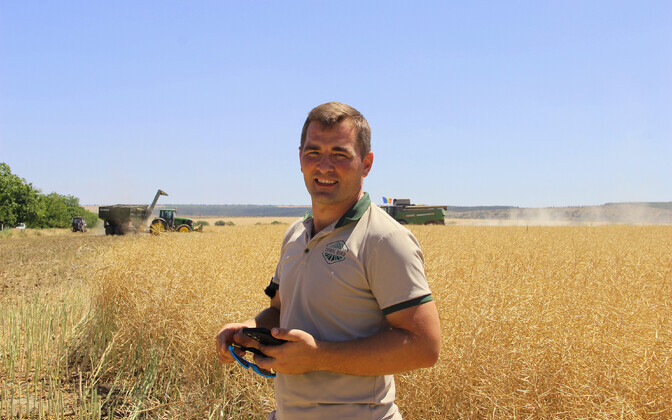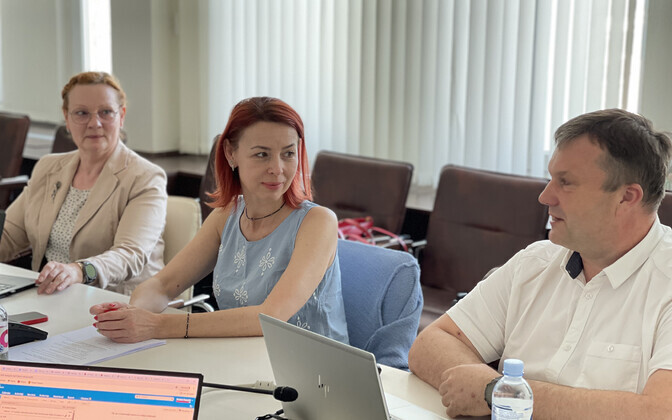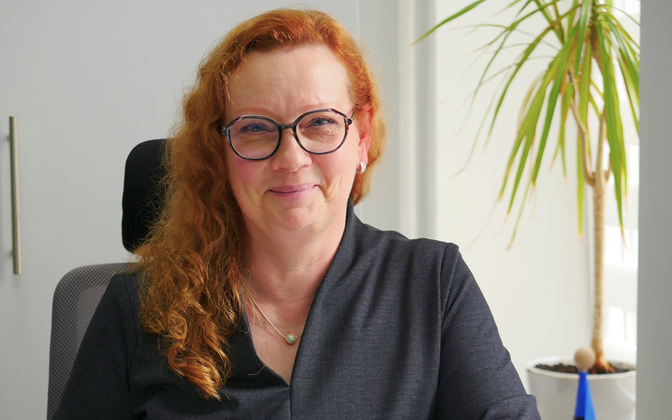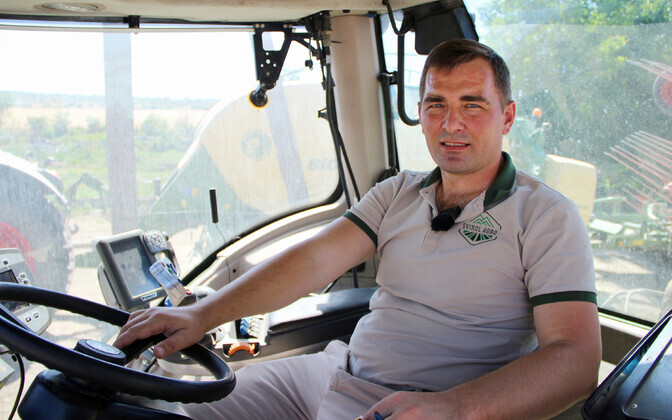“I am running around town with documents right now,” Veaceslav Burlacu tells me over the phone in Cahul. He’s a third-generation farmer from southern Moldova.
As a little boy, he and his father would walk across the fields with a ruler to measure the crops. Now, everything on his farm is digital. He mostly monitors his fields on screens.
But when he goes to apply for funding, it’s like he’s stepping back in time. He collects stamps for his documents from each office. “Some inspectors still check every signature and every stamp,” Burlacu says. Sometimes, he even has to get a stamp on a document he has already submitted online.
But change is coming, and he can feel it.
“Now it’s much faster,” he admits. “About half the documents can already be obtained online.” Digitalisation has already saved him time. He’s excited about the European funds. They could be a real game-changer once they become available.
“We’re ready!” Burlacu adds enthusiastically.
 “We are ready,” says Veaceslav Burlacu, one of Moldova’s forward-looking farmers, as he waits for EU funds and the country inches towards accession. Source: Olga Cernea.
“We are ready,” says Veaceslav Burlacu, one of Moldova’s forward-looking farmers, as he waits for EU funds and the country inches towards accession. Source: Olga Cernea.
His optimism is warranted. Moldova’s path toward the European Union will soon change how farmers like him apply for support.
The EU devotes around a third of its total budget to agriculture, so substantial support is expected to arrive soon. But the subsidy system needs an upgrade, and fast.
“Farmers arrived frustrated and tired”
Meanwhile, in Chisinau, Estonian experts crowd into a small meeting room at Moldova’s Payment Agency (AIPA), which hands out grants to farmers. As part of the EU-funded Agrifood Twinning project, Estonia and the Netherlands are assisting Moldova’s Ministry of Agriculture and Food Industry (MAFI) and AIPA in building stronger institutions and improving administrative efficiency.
They are here to cut out the paperwork and make sure the information between different offices moves so that Burlacu and others like him don’t have to run around town getting stamps on their documents. The Twinning project is administered by the Estonian Center for International Development (ESTDEV).
Liina Tilk, the head of human resources at Estonia’s Agricultural Registers and Information Board (PRIA), says that hearing what farmers have to go through in Moldova reminds her of Estonia about 20 years ago.
“I remember long lines where farmers came to the office with their applications,” Tilk says.
Everything was done on paper. Farmers had to bring in health records for each animal, company certificates and land-use documents. Each paper, stamped and signed, had to be picked up from a different office. Farmers arrived at her office, frustrated and tired, with stacks of paper.
“It was hard to manage all that,” says Tilk.
Today, those long queues are history. The process is fully digital and transparent. Farmers apply for funds with a few clicks on their laptops. Information is shared between all agencies, eliminating the need for farmers to travel.
 Estonian and Moldovan colleagues are working together to digitalize Moldova. Source: The Agrifood Twinning Project
Estonian and Moldovan colleagues are working together to digitalize Moldova. Source: The Agrifood Twinning Project
Digitalization meant that the time spent applying for agricultural subsidies decreased from 5 hours to 45 minutes in Estonia, according to Ene Kärner, a leading Estonian expert in digital agriculture.
Now Tilk is in Chisinau, helping her Moldovan counterparts do the same. She’s one of many Estonian and Dutch experts helping Moldova align its agricultural systems with EU standards.
No more queues
“We are learning from international best practices so that we can have the accreditation from the EU as a payment agency,” said Dumitru Popovici, the legal director at AIPA.
Only then could they manage European funds and direct them to the farmers, which is why AIPA is moving online.
Currently, all support for farmers still comes from the Moldovan state. But Popovici hopes that by 2027, Moldova could start accessing EU pre-accession funds. That, he says, would make a big difference for local farmers.
“For farmers to have a better life.”
“Everything we do is so that Moldovan farmers can have a better life,” says Agnes Naarits, Estonia’s twinning adviser for the Agrifood Project, who is working in Moldova.
We sit in her office in a high-rise in Chisinau, drinking tea and eating Estonian chocolate. Thanks to the constant visits by Estonian experts, she has a steady flow of Estonian sweets.
Together with AIPA and MAFI, Estonian and Dutch experts are designing systems that make grants simpler to apply for, easier to trace and more transparent.
“This isn’t just consulting,” Naarits says. “It’s cooperation between equals. We’re not just sharing technology, we’re sharing confidence.”
 “We show our Moldovan colleagues how to cut bureaucracy,” says Agnes Naarits. Source: Marian Männi
“We show our Moldovan colleagues how to cut bureaucracy,” says Agnes Naarits. Source: Marian Männi
Naarits knows what it means to prepare for EU membership, saying, “We’re helping Moldova build the systems to manage agricultural funds transparently and accessibly.” She believes that applying for entitled support should be easy, not a legal maze.
“We show them that it can all be done without paper,” she continues. “That information can move between agencies. That a farmer doesn’t have to be a lawyer to get support.”
Before Estonia joined the EU, experts from Finland provided support to Estonia. Now, it’s Estonia’s turn to give back.
Naarits’ Moldovan colleagues have plenty of enthusiasm, but the agency and the ministry are severely underfunded.
From paper to one of the most digitalized nations
Estonia’s transformation didn’t happen overnight. When it joined the EU, its systems were still new and fragile. But within a few years, it built one of the most digitalized agricultural support systems in Europe. Farmers could apply online, track their payments and see where every euro went.
That’s the experience now being shared in Moldova.
What strikes Naarits most is the energy of her Moldovan partners. “They want change. They’re eager to learn and adapt. We will help them avoid our mistakes,” she says.
Digitalization may sound technical, but its impact is deeply human. It gives farmers a voice, ensures fairness, and strengthens public trust. It’s also a symbol of Moldova’s path to the EU. Transparency and efficiency aren’t just EU requirements; they’re European values.
Every new digital step brings Moldova a little closer to the goal.
Estonia’s smart solutions changed everything. In Moldova, that change has now begun.
***
This article was originally published by the Estonian Center for International Development (ESTDEV) here.
—
